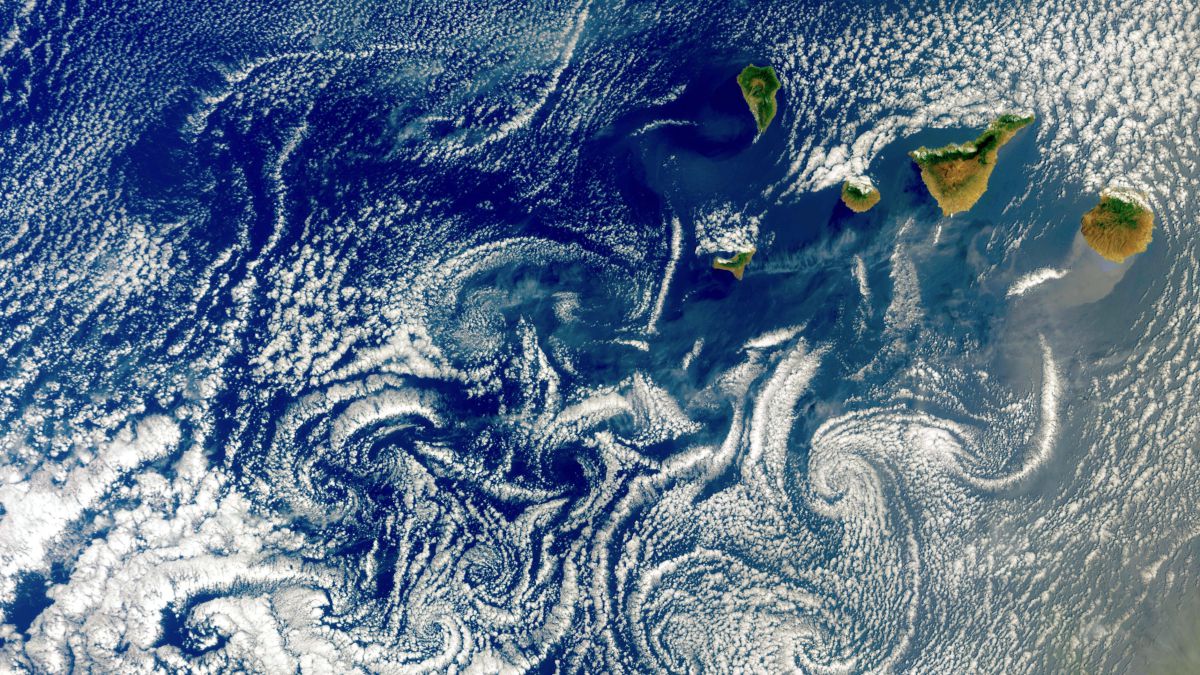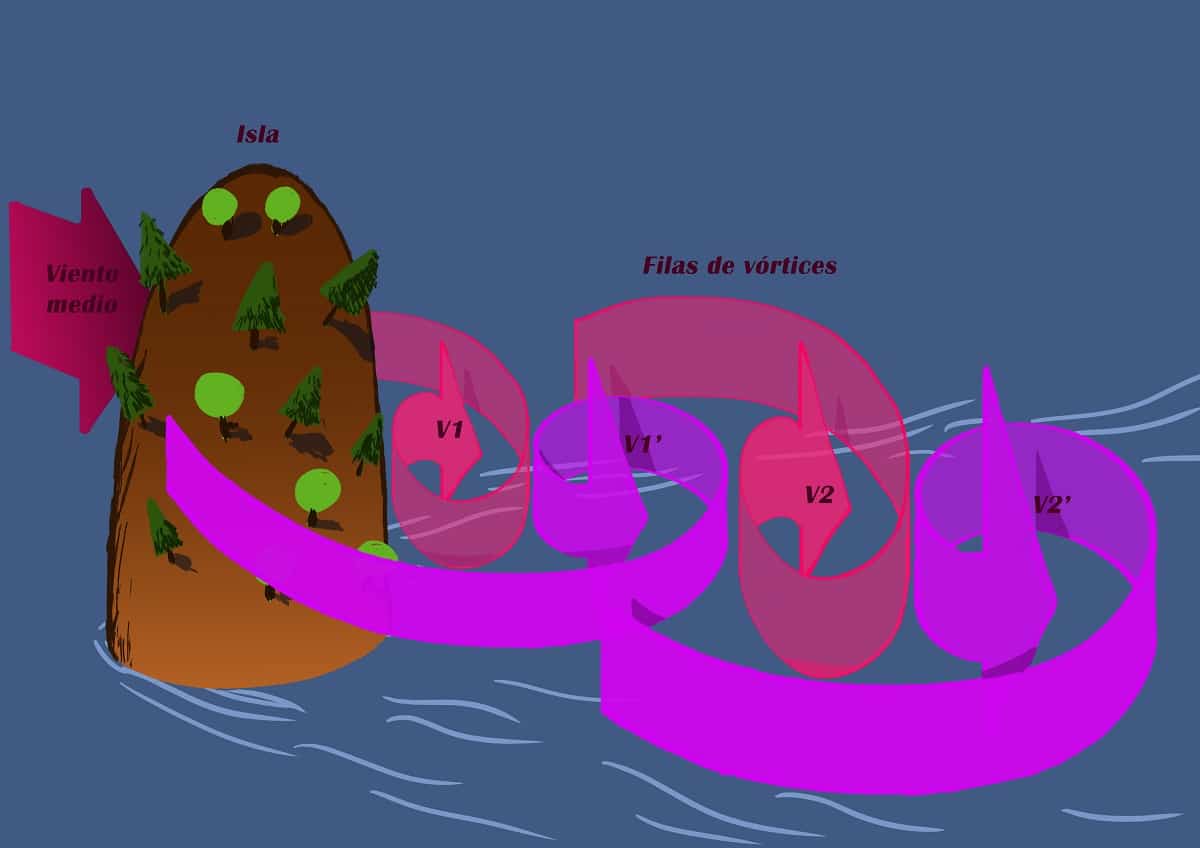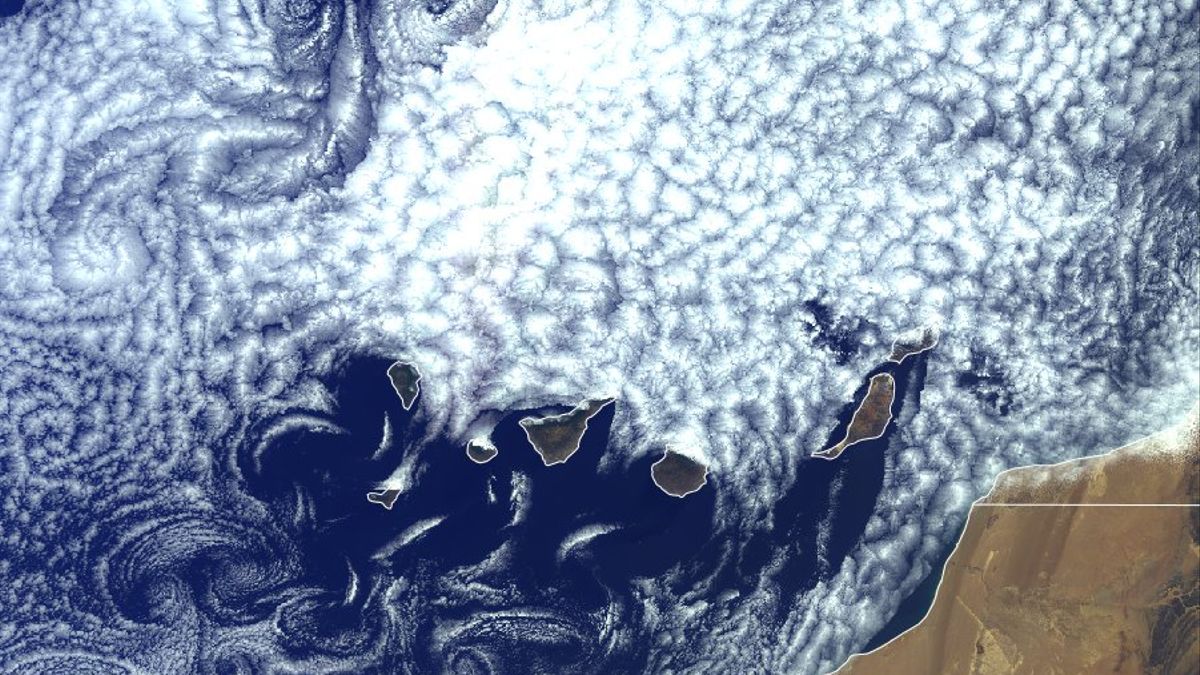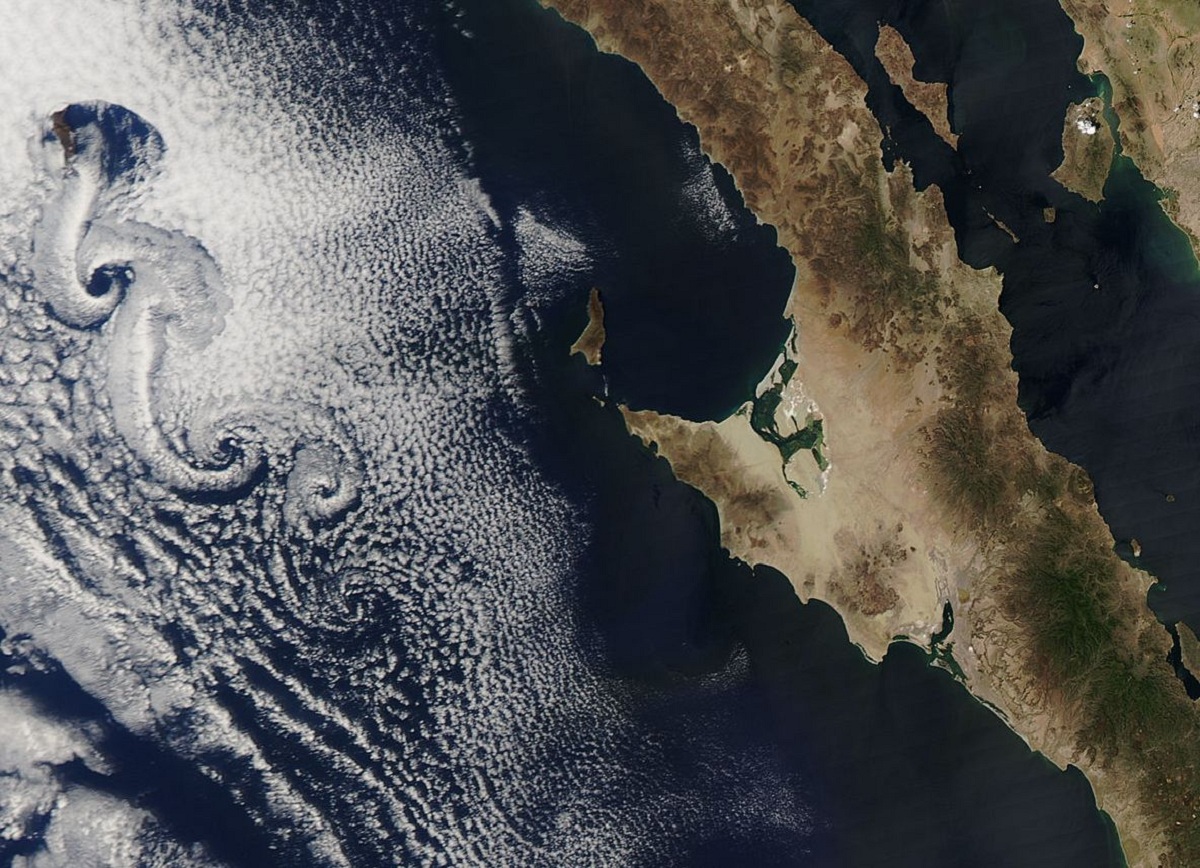
Turbulence is not only present in nature, however you look at it, but it is very necessary in many situations: to better mix different fluids (that's why we shake coffee and milk to mix them), or to create a greater transfer of heat between liquids (we also shake the coffee to make it cool faster), etc. In meteorology they also exist and are called Von Karman vortices.
In this article we are going to explain everything you need to know about Von Karma dump trucks, their characteristics and importance.
Von Karma vortex properties

To begin with, we must know the properties that define a fluid and its dynamics. Density, pressure or temperature are variables that we all more or less know. Based on them and their effects, any movement or dynamics of a fluid can be explained, however complicated it may be:
Instability

Imagine a stream of air hitting a sphere; if the air speed is low, we find that the air moves "smoothly" around and behind the ball; this back is also called the "downstream" or "tail" of the water flow.
In this case the flow is called laminar, that is to say: eddies or generally called turbulences are not appreciated, the truth is that without turbulence everything would be boring, in fact even the Navier-Stokes equations can Applications in psychology, crowd control or the design of pedestrian evacuation systems in stadiums, etc., everything is easier if there are no turbulence.
Now suppose that each air molecule follows another air molecule, and so on; there are an infinite number of molecules along a smooth line. Let us imagine that, for whatever “reason”, there is suddenly a molecule that does not follow this dynamic pattern, that is, it leaves the “normal” trajectory, albeit very rarely; technically speaking, it is said to happen "unstable". This instability is the beginning of turbulence; From that moment on, the changes in the trajectories follow one another logically, since one molecule pushes the other to change direction, and so on. "reason" why in the first place.
Molecular trajectories can be very, very diverse: very subtle changes in temperature, pressure or density, even the most common ones of unknown origin
Depending on the geometry or structure that forms next, the instability receives the following names:
- Kelvin-Helmholtz instability: It can occur in flow within a continuous fluid such as air or water, or at the interface of two fluids or two layers of the same fluid moving at different speeds.
- Rayleigh-Taylor instability: Important in the "fall" (collapse) or descent of cold air from the upper atmosphere. Even in the "sharp" rise of hot air.
Viscosity
Viscosity is probably well known because everyone compares water to honey or lava, for example, inferring what viscosity is. Let's imagine from another angle: Suppose we are at a traffic light with vehicles in front and behind; when the traffic light turns green, we need some time to move; then: viscosity is as the reaction time between each reciprocal carrier (1/reaction time); the higher the viscosity, the shorter the reaction time; that is, all fluids tend to move in unison or together.
Viscosity is often thought of as the frictional force between molecules in a fluid. The higher the friction, the higher the viscosity. Among other things, this force is the reason for the existence of the boundary layer: the closer the air is to the surface, the lower its speed (in the image below, the short arrow indicates the slowest speed).
For example, paragliders and even airplane pilots know that when the wind blows (dangerously) strong, they can descend, because being “flush” with the trees reduces their force considerably.
Continuing with the ball example we mentioned earlier, for example, if the airflow over the wing is completely laminar and there is no boundary layer (which we already know is the same as saying no viscosity), there is no difference. pressure between the top and bottom of the wing, so there is no lift; the plane cannot fly; it's that easy. Flying is completely impossible, but luckily the stickiness is always there. Also, without viscosity, they would not cause turbulence despite the instability.
Aggregation of matter by low pressure

When a particle (such as an air molecule) is at low pressure, it attracts it with an acceleration given by the change in pressure divided by the density. With high pressure the opposite happens, it repels or pushes.
In meteorology, areas of high pressure are called anticyclones, while cyclones or storms (extratropical cyclones only in special cases) They are called low pressure zones.. All the air in the atmosphere or all the water in the Earth's oceans moves because of these pressure differences. Pressure is the mother of all properties; in fact, many other variables affect pressure changes: density, temperature, viscosity, gravity, Coriolis forces, various inertias, etc.; in fact, when an air molecule moves, it does so because the molecule that precedes it has left a region of low pressure, the region tends to fill up immediately
We have seen causes or instabilities that arise in media such as the atmosphere or the ocean, forming certain geometries, one of them - the subject of this work - are the so-called Von Karman vortices. Now, once we understand the causes and variables that interfere with all the dynamics of any fluid, we are ready to learn about this very specific geometry.
When the airflow circulates around any geometry, evolves around it, leading to instability, as we have already seen, forming turbulence; these turbulences have practically infinite types and forms; most of them are not periodic; that is, they are not repeated in time. or space, but some do. This is the case of the aforementioned Von Karman vortices.
They form under very specific airspeed conditions and certain dimensions of the object acting as an obstacle.
I hope that with this information you can learn more about Von Karman vortices, their characteristics and importance in meteorology.